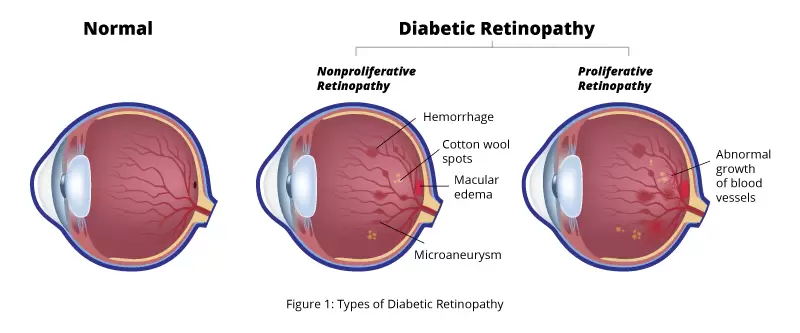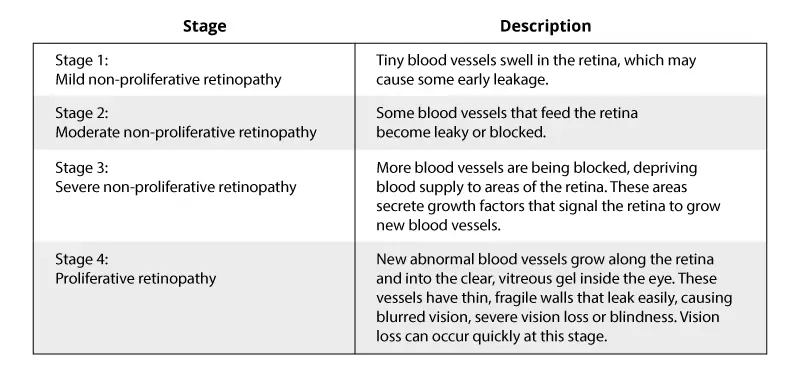
Vision Loss due to Diabetes is Preventable
Jul 3, 2018
Stages of Diabetic Retinopathy
Diabetic retinopathy (DR) is an eye condition where elevated blood sugar levels cause blood vessels in the eye to swell and leak in the retina. The most dangerous part of DR is that it can destroy the eye’s blood vessels without any noticeable symptoms. Often, there are no symptoms until the disease progresses and vision is permanently damaged. According to International Classification of Diabetic Retinopathy, DR could be classified into 4 different stages:


Reducing the Risk for Diabetic Retinopathy
The best treatment for DR is to prevent the development of retinopathy as much as possible. Early detection and treatment can reduce the risk of blindness by 95%. People having diabetes should have strict control on blood sugar level. Early detection of DR is also the best protection against vision loss. Hence, people with diabetes should visit ophthalmologist at least once a year to perform a comprehensive eye examination.
Pycnogenol® – The Protector Nutrient for Diabetic Retinopathy
Pycnogenol® is a unique natural health ingredient extract from the bark of the French maritime pine (Pinus pinaster). Pycnogenol® consists of high bioavailability antioxidant called procyanidins, bioflavonoids and organic acids. Procyanidins, the potent antioxidant in French maritime pine bark extract, is clinically proven in the prevention of retina’s lipid peroxidation. Besides, Pycnogenol® protects retinal capillaries by strengthening them to help control leakage of blood and fluids into the retina. Pycnogenol® also supports better blood micro-circulation in the retina by improving the endothelial function of retinal micro vessels. Five clinical studies with more than 1200 participants have demonstrated that Pycnogenol® improves the vascular system of the eyes to preserve healthy eyesight.
Hence, do not hesitate to take BiO-LiFE Pycnosight which providing Pycnogenol® as a nutrient protector to prevent the development of DR!
References
- International Council of Ophthalmology. 2017. ICO Guidelines for Diabetic Eye Care. [Retrieved from http://www.icoph.org/downloads/ICOGuidelinesforDiabeticEyeCare.pdf , 26 June 2018].
- National Eye Institute (NEI). 2015. Facts About Diabetic Eye Disease. [Retrieved from https://nei.nih.gov/health/diabetic/retinopathy , 26 June 2018].
- Pycnogenol. 2018. The benefits of Pycnogenol® French maritime pine bark extract for vision. [Retrieved from https://www.pycnogenol.com/applications/eyes-vision/ , 26 June 2018].



